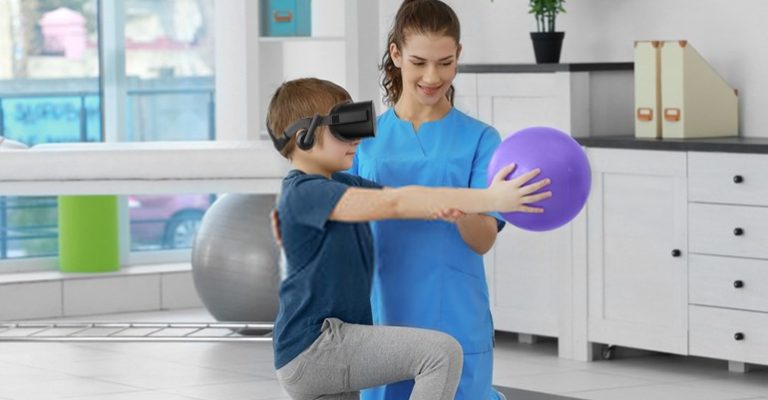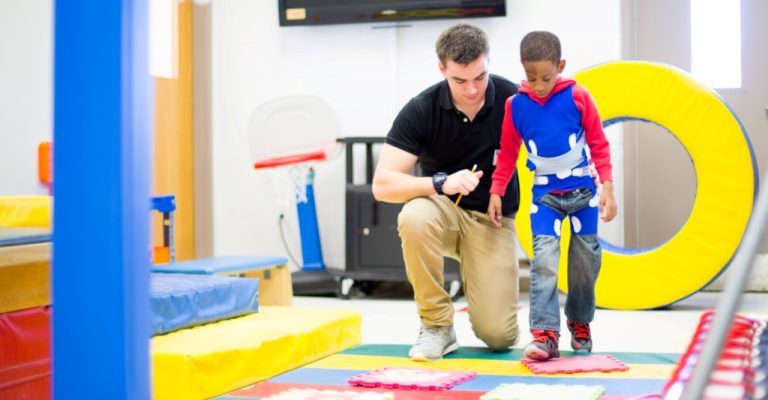
When it comes to helping someone with cerebral palsy, exercise physiology is often the first step. Exercise is helpful to everyone, but it is especially useful to persons with cerebral palsy.
Exercise for cerebral palsy can help individuals increase their degree of independence and quality of life in a variety of ways, from maintaining the body flexible and strong to enhancing mobility and avoiding injury.
Cerebral palsy patients might have either high or low muscle tone or a combination of the two. Muscle tone may also alter throughout the day for certain persons with cerebral palsy. High muscle tone may result in spasticity and rigidity, while low muscle tone results in weakness and excessive flexibility.
Different exercises for cerebral palsy are often used to increase mobility and prevent painful muscular tightness, which occasionally necessitates surgery.
We’ve listed 15 effective exercises for cerebral palsy adults below.
Rotate all of your primary joints, including the neck, to increase or maintain your range of motion. Rotate them a few times in one direction, then switch to the opposing way. This will help to reduce stiffness and increase circulation.
Many people with cerebral palsy have stiffness in their calves. This may cause the heels to lift, resulting in aberrant gait patterns such as toe-walking. Stand facing a wall and take a large stride back with one leg to extend tight calves. Adjust your legs such that the front leg is bent and the rear leg’s heel is lifted.
Lean your arms on the wall for support and slowly descend your heel. Hold for 20-30 seconds before switching legs.

The quadriceps are the muscles on the front of your thighs. When your knees get stiff, they may begin to bend inwards, contributing to aberrant walking patterns. Sit on the floor with one leg bent back and the other out in front of you to stretch your quads. Lean back gently until you feel tension but not discomfort. Hold for 20-30 seconds before switching legs.
The hamstrings are the muscles at the rear of your thighs. Because these muscles oppose the quads, they must also be stretched to allow for normal hip and knee motions. Sit on the floor with both legs straight in front of you and bend forward in a pain-free range to stretch the hamstrings. Hold for 30 seconds before repeating.
Raise one arm behind your head and bend it. Gently push the elbow back with your other arm’s hand until you feel the strain. Hold for 20-30 seconds before switching arms.
Swing one arm over your chest, holding it in place with the other. Gently squeeze the arm towards your body to tighten the wrap around the chest. Hold for 20-30 seconds before switching sides.
Lay on your back and twist your upper body to one side slowly. Legs should not be moved. After 20 seconds, rotate your upper body to the opposing side. This stretch stretches the sides of your trunk.

Trunk twists may be done while sitting and standing. Keep your lower body steady by placing your feet on the floor. Gently rotate your upper body to one side, hold for 20 seconds, and then repeat.
Wheelchair aerobics may be an efficient cardio exercise if your cerebral palsy mostly affects your legs or one side of your body. It stresses upper body mobility while sitting.
Dancing is a workout that everyone may undertake at any time and in any place.
Turn on some upbeat music for cardio. Music has been shown to affect physical changes in heart rate, blood pressure, muscular tension, and respiration.
Pushing your wheelchair is a terrific arm and chest strengthening exercise, as well as a cardio workout for those with CP in the lower body.
As much as possible, push your wheelchair instead of letting others push it for you. This is a simple method for incorporating strength training into your regular routine.
First, make sure your wheelchair brakes are engaged. Then, with your feet level on the floor, sit on the edge of your seat.
Lift your body up by placing your hands on the armrests and pressing down. Your feet should stay on the floor, supporting part of your weight.

Resistance bands come in a number of resistance levels and may be used for a variety of muscle training workouts.
Putting on some weighted cuffs around your wrists or ankles and carrying them about with you as you go about your day is a simple approach to increase your strength. It may not seem like much at first, but even a few more pounds can make a significant difference over time.
Have you ever taken the time to consider how much more challenging it is to move swiftly when you are submerged in water as opposed to when you are on land?
This is due to the fact that liquids possess a viscosity (level of resistance) that is higher than that of gases. The increased resistance will assist in making the muscles stronger.
You must realize that there is no such thing as a one-size-fits-all exercise program for those with impairments. Every individual is distinct. Whether they have a disability or not, their fitness requirements will be heavily influenced by their abilities.
Nonetheless, encouraging individuals to be active from a young age has long-term advantages in terms of helping them live healthier and more active life.
Exercises for cerebral palsy may be done at home with the help of loved ones, but it is still essential to have the assistance of trained specialists while you are doing your exercises.
Certain types of cerebral palsy need specialized care and attention. If your loved one has a disability, the ideal sort of individuals to help them attain the degree of fitness that you would desire for them are qualified fitness specialists who specialize in working with adults.